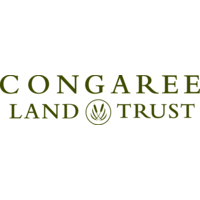680 acres along Wateree River in Camden, now conserved
June 25, 2019Over 680 acres of undeveloped woodlands, fields, and significant wetlands along the Wateree River, located just outside the city of Camden, are now conserved, thanks to the collaborative efforts of Bramblewood LLC, Congaree Land Trust (CLT) and the S.C. Conservation Bank. Now under conservation easement, the property’s valuable open space, watershed, and wildlife habitat along the Wateree River are permanently protected from development in an increasingly urbanized area of the state.
“With growth and development booming in places like Camden, it makes land conservation more challenging, so we’re very thankful to landowners like the Bramblewood group for securing a conservation easement, which helps protect our vital resources from becoming urban sprawl,” says Stuart White, CLT Executive Director. “Bramblewood’s proximity to existing conserved properties in Kershaw County creates a noteworthy block of protected land at the landscape level.”
Located on the east bank of the Wateree River, Bramblewood joins the Cowasee Basin Focus Area, an important collaborative landscape conservation project to protect 315,000 acres along the Wateree, Congaree, and Santee Rivers, which contain some of the most significant natural, cultural and historical resources in South Carolina. The property is also situated in the Wateree River Conservation Corridor (WRCC), a forty mile stretch of undeveloped landscape along the Wateree River from Camden south to the confluence with the Congaree River. With nearly a mile of frontage along the east bank of the Wateree River, the property helps protect the riparian corridor of the Wateree. The property’s working timber and agriculture fields help filter road, yard and roof runoff water before entering the river, providing the public health benefit of clean water and filtered air.
With its size, setting and habitat diversity (including nearly 200 acres of diverse wetlands) Bramblewood supports an extensive variety of wildlife—40 species of mammals, birds, and reptiles of conservation concern by the South Carolina Department of Natural Resources. A remarkable 20-acre former rice field features a scattered over story of small pond cypress and water tupelo with a thick understory of hydric shrubs and woody plants supporting an array of wildlife. The diverse wetlands likely support foraging wood storks, a federally-listed threatened species, at certain times of the year, while the forested wetlands and creek bottom hardwoods provide prime breeding and migratory habitats for a wide variety of Neotropical migratory birds, many of which are declining. A rare and critically imperiled oak known to occur in only two counties in South Carolina—the bottomland post oak—can also be found on the property.
Bramblewood is steeped in history— prior to European contact it was part of the paramount Native American chiefdom of Cofitachequi, a Mississippian-period native community whose culture and influence was widespread in South Carolina. In 1540, the first European expedition of the Southern interior, led by Hernando de Soto, came through the area to meet the influential Cofitachequi. Skirting the edge of Bramblewood is a noteworthy path that connected the backcountry to native territories, called “Catawba’s Path” at the north end and “Great Road to Charleston” at the south end. De Soto, and later, renowned explorers Juan Pardo and John Lawson, would follow that path en route to other Southern territories, while George Washington would have likely passed through during his famous Southern Tour. Bramblewood’s fertile bottomland soils supported cultivation of inland rice and indigo crops in the 19th century, while the river provided essential transport. For hundreds of years, Bramblewood has sustained a way of life fueled by the river, fertile swampland and bounty of wildlife tied to the land.
“Bramblewood has collaborated with historians, biologists and young wildlife enthusiasts, as it is a very special property for current owners, their families, and future generations,” says long-time Bramblewood Farm Manager, Ralph Cantey. “The many different habitats encourage such a wide range of plants and animals which allow us all an opportunity to experience. Historical structures and written history allow us to walk in the past. The owners are keenly aware of the importance of conserving this unique place for the community and future generations.”

About Congaree Land Trust:
The Congaree Land Trust (CLT) was founded in 1992 by seven individuals committed to conserving the natural and scenic lands in central South Carolina. To date, over 77,000 acres have been conserved, representing 166 individual conservation easements across 13 counties. Conservation easements help protect the natural areas that fuel our state’s natural resource-based economy and define our way of life. Learn more:www.congareelt.org or contact Erin Eisele at [email protected]


















